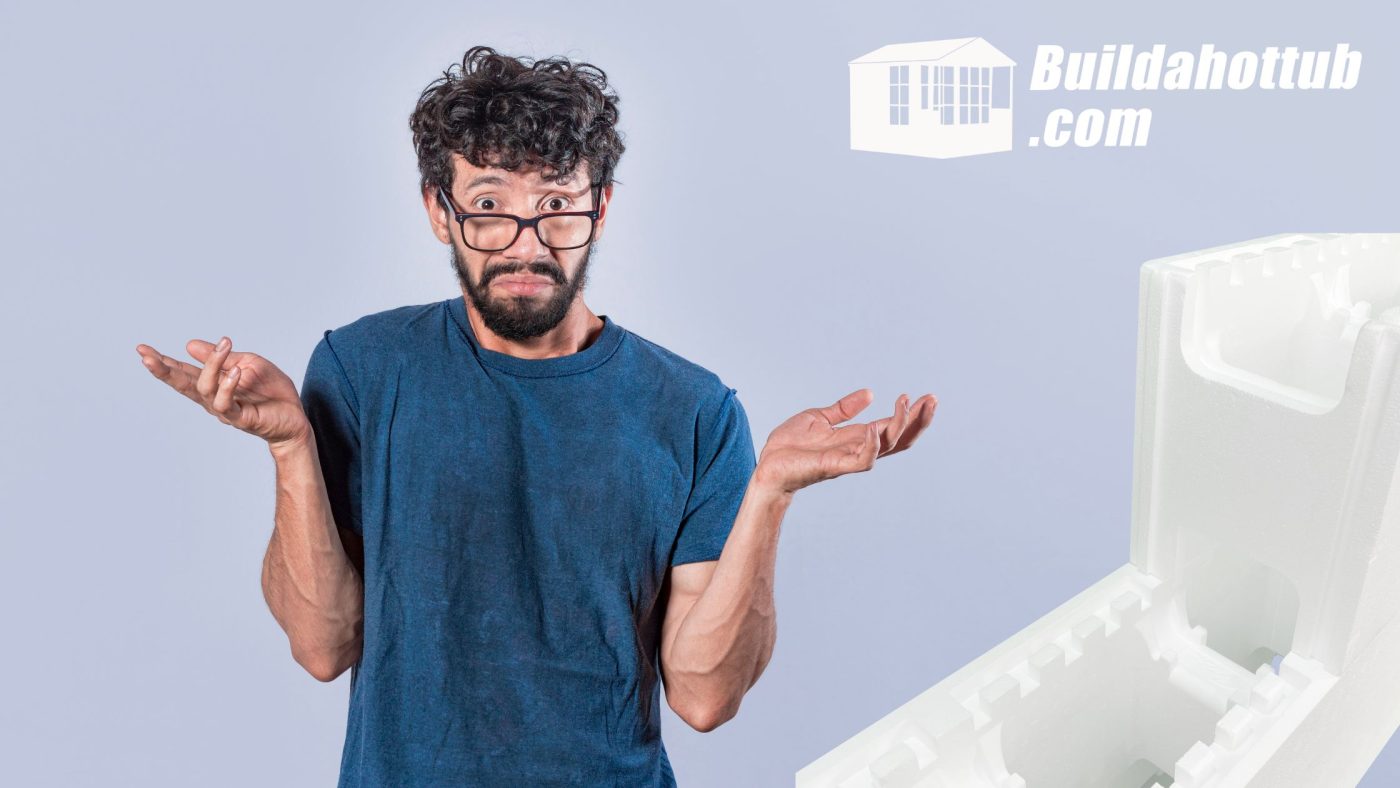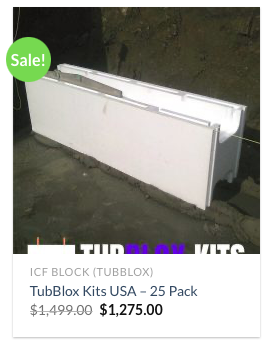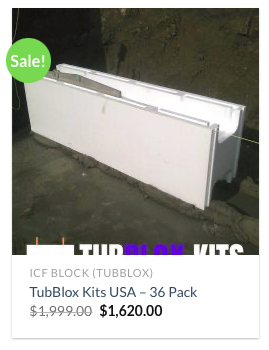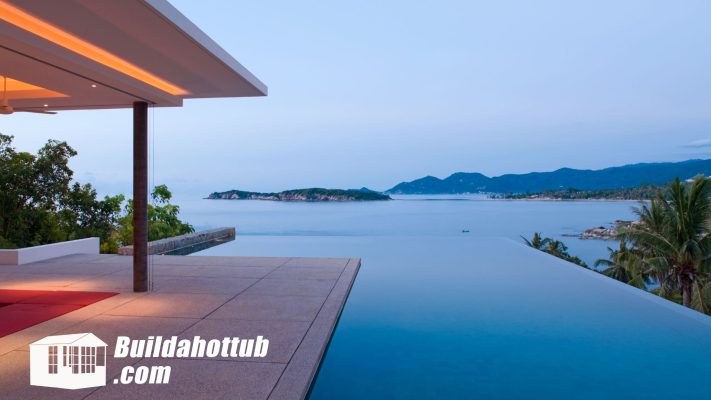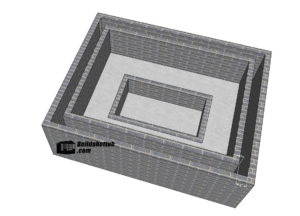When it comes to building a spa, there are many factors to consider. One of the most important is the type of spa construction you choose. There are several different types of spa construction, each with its own advantages and disadvantages. In this blog post, we will explore the different types of spa construction so that you can make an informed decision about which type is right for you.
Acrylic Spas
I’m going to start with these even though it is not really a method you are going to use to build your own – they tend to be shop bought. Acrylic spas are perhaps the most popular type of spa construction and are used in pretty much all the hot tubs you can buy in a store.
These spas are constructed with a shell made of a durable, high-gloss acrylic material. The acrylic shell is supported by a frame made of wood or metal. Acrylic spas are easy to clean and maintain, and they come in a variety of colors and sizes. They are also relatively inexpensive compared to other types of spas.
However, If you have found my website, then the chances are you don’t want one of these.
Fiberglass Spas
Fiberglass spas are not really very popular, they used to be and they tend to be more for a pool rather than a spa. These spas are constructed with a shell made of fiberglass, which is coated with a waterproof gel coat. Fiberglass spas are lightweight, easy to install, and require very little maintenance. They are also available in a variety of shapes and sizes. However, fiberglass spas are not as durable as acrylic or concrete spas and may require more frequent repairs.
Wood Spas
Wooden spas are a unique and attractive type of spa construction. These spas are constructed with a wooden frame and a liner made of waterproof material such as vinyl or fiberglass. Wooden spas are environmentally friendly and can be customized to fit any shape or size. However, they require regular maintenance to prevent rot and deterioration. They are also difficult to seal and keep water tight. I have a case study on my website from Brandon in the USA and his “ordeal” with his wooden spa – check it out.
Shotcrete and Gunite Spa Construction
Shotcrete and Gunite spas are also popular types of spa construction, particularly for larger and custom-designed spas. These methods involve spraying a mixture of concrete or mortar through a high-pressure hose onto a steel or wire mesh framework to create the shell of the spa.
In the shotcrete method, the concrete or mortar mixture is pre-mixed and delivered to the construction site in a truck. The mixture is then pumped through a hose and sprayed onto the mesh framework using compressed air.
In the Gunite method, the dry concrete or mortar mixture is delivered to the construction site in bags and mixed with water on site. The wet mixture is then pumped through a hose and sprayed onto the mesh framework using compressed air.
In both methods, the sprayed mixture is shaped and smoothed by hand to create the desired contours and finishes. Once the concrete has cured, the spa is coated with a waterproof material such as plaster or tile to prevent leaks and protect the surface from damage.
The resulting shell is highly durable, and the process allows for greater design flexibility than other types of construction.
However, shotcrete and Gunite spas can be more expensive and time-consuming to build than other types of spas, and they require skilled professionals to ensure proper application. This is not something you can attempt as a DIYer. Nevertheless, the end result is a strong and long-lasting spa that can withstand the test of time.
This is the most popular method used by the professional spa and pool builder.
Concrete Spa Construction
Concrete spas are another popular type of spa construction and certainly one of the spa construction methods you can do as a DIYer. Normally, you would use a wood construction to create a form or a mould for the shape of your spa.
You would then add the plumbing to this shell and have everything in situ before you then poured in the concrete into the form or mould. Let the concrete cure before removing the form to reveal your concrete spa.
The concrete shell is then coated with a waterproof material such as plaster or tile. Concrete spas are very durable and long-lasting. In terms
ICF Block Spa Construction
ICF (Insulated Concrete Forms) block spa construction is becoming increasingly popular for its energy efficiency and ease of construction. The ICF blocks are made from expanded polystyrene foam and provide excellent insulation and structural support.
The blocks are stacked and then filled with concrete to create the spa shell. This type of construction offers superior energy efficiency, with reduced heating costs due to the high insulation value of the foam. Additionally, ICF block spas can be built quickly and with fewer materials than other types of construction, resulting in a lower overall cost.
This is one of my favourite methods of spa construction at present – the speed and ease that the blocks and be put in place, then the plumbing added makes it a great type of Spa Construction for a DIYer.
Block Built Spa Construction
Block build spa construction involves using concrete blocks or cinder blocks to create the shell of the spa. This is the method that I used myself to construct my own Spa.
The blocks are stacked and then filled with concrete and rebar to create a solid and durable structure. This method is popular for its affordability and simplicity, as it requires fewer materials and can be completed relatively quickly.
Additionally, block build spas are highly customizable, allowing for a wide range of shapes and sizes. However, it is important to note that block build spas may not be as energy efficient as other types of construction. Proper waterproofing and regular maintenance are essential to ensure the longevity and durability of a block build spa. It’s still one of my favourites.
Conclusion
In conclusion, there are many different types of spa construction to choose from. Each type has its own advantages and disadvantages, and the right choice for you will depend on your specific needs and preferences but most importantly, your own skillset.
Whether you choose a concrete spa, a ICF Block spa, or a block built spa, you can be sure that your spa will provide you with years of relaxation and enjoyment. It’s a great project and certainly something I can help you with.
Happy “Spa Construction” Hot Tubbin’
Can I Help You?
If I can help you in any way I would love to hear from you. You can get in touch using the form below.
Thanks - Andi
 Hi, Andi here. I own Buildahottub.com and also write all of the articles and info pages on the site. Some years back now, I built my own hot tub but struggled to find the information I needed. So, once my tub was complete, I started this website to help others in their own pursuit of hot tub and plunge pools DIY building information.
Hi, Andi here. I own Buildahottub.com and also write all of the articles and info pages on the site. Some years back now, I built my own hot tub but struggled to find the information I needed. So, once my tub was complete, I started this website to help others in their own pursuit of hot tub and plunge pools DIY building information.
Fast forward to 2025, I've helped over 1400+ DIY customers just like you all over the world build hot tubs and pools. Have a good look around the site, there are lots of resources here. Please do get in touch if I can help you. - Cheers, Andi

